Abstract
A complete series of stereoisomeric quaternised diaminoandrostanes, differing in their stereochemistry at the 3,5 and 17 positions, has been examined for effects on the thermal denaturation of calf thymus DNA and for the ability to remove and reverse the supercoiling of closed circular duplex PM2 DNA. In both types of test the eight isomers rank in the same order of effectiveness. The preferred stereochemistry for the quaternary substituents at positions 3 and 17 is beta; of these the orientation of the 17- substituent is more critical. Folding of the steroid skeleton between the A and B rings, as in 5beta-androstanes, diminishes effectiveness but does not necessarily abolish the effect on supercoiling. The over-riding importance of the C-D ring end of the steroid nucleus bearing a 17beta-amino substituent is confirmed by a comparison of the effects of five mon-amino androstanes. Relative helix=unwinding angles per bound steroidal diamine molecule have been determined for four of the isomers; for three 17beta compounds the estimated values are similar to that previously reported for irehdiamine A. For a fourth isomer the angle is 0.22 times that of ethidium, the lowest yet determined for any DNA-binding drug. The results lend further support to the argument that intercalation can be reled out, and alternative models for the binding mechanism are discussed.
Full text
PDF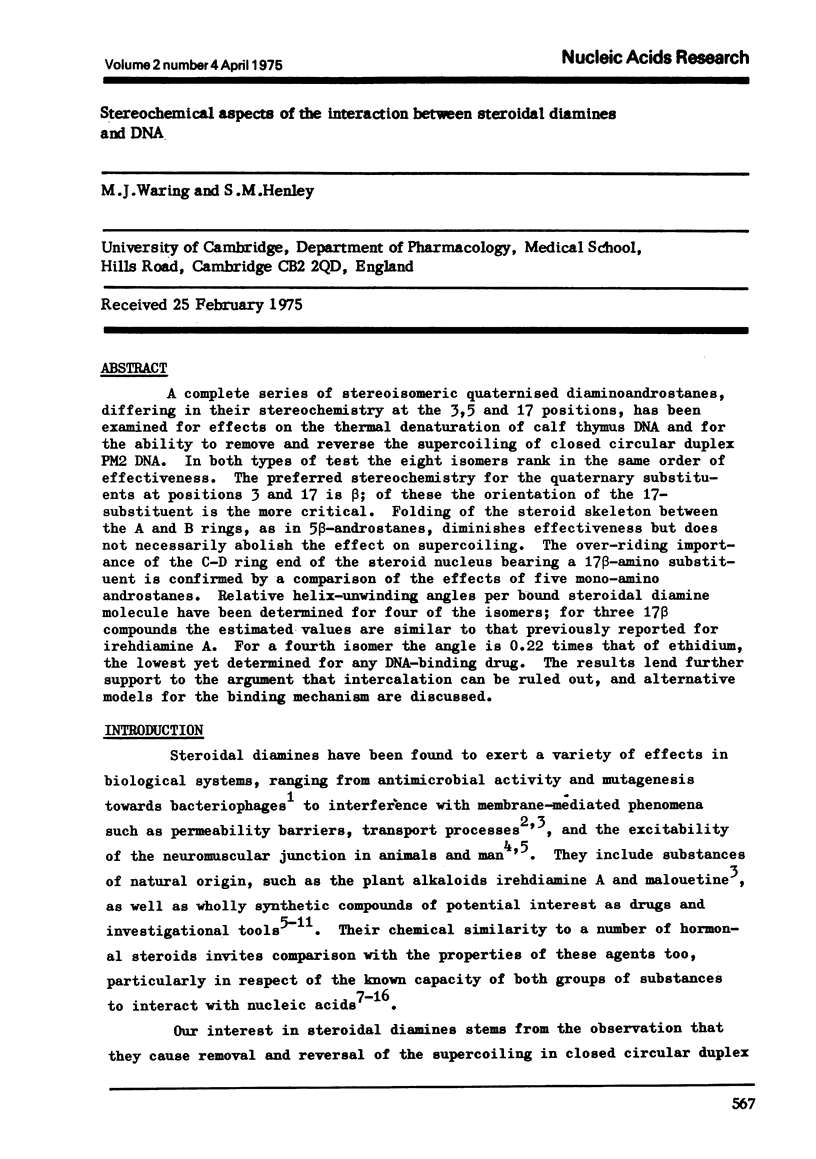
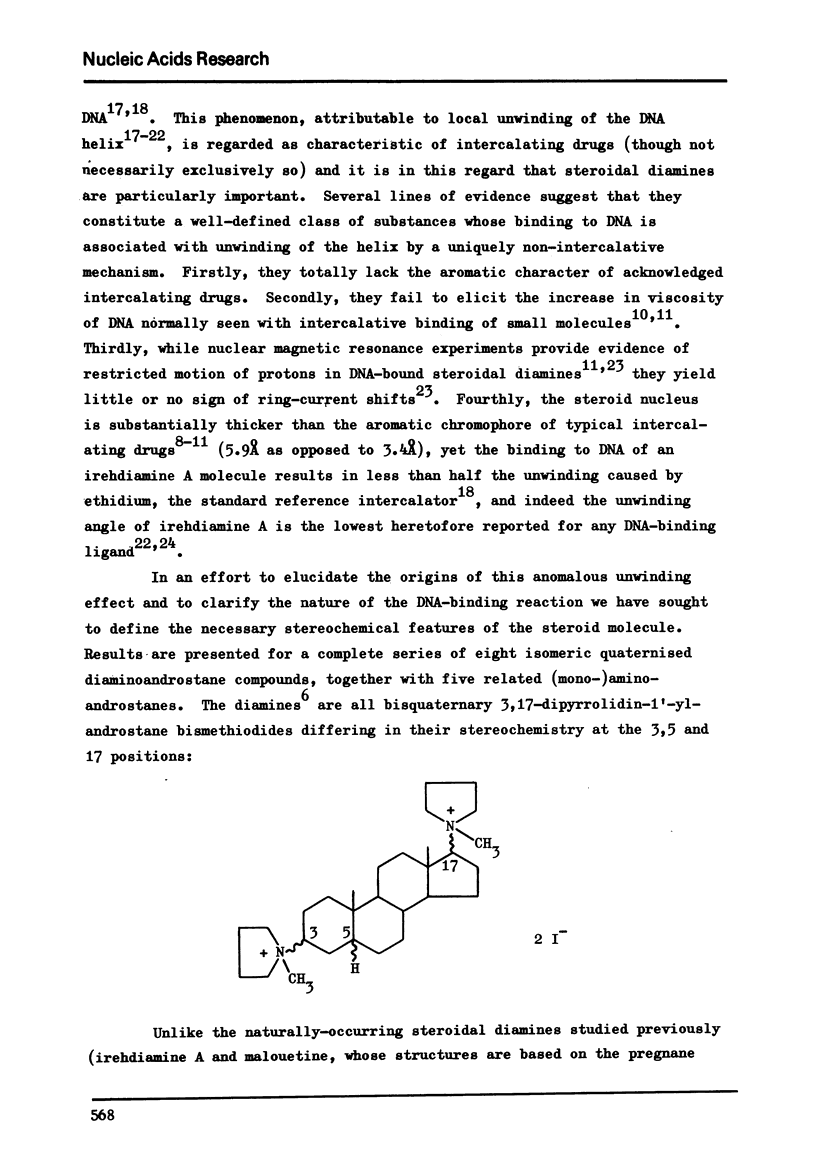
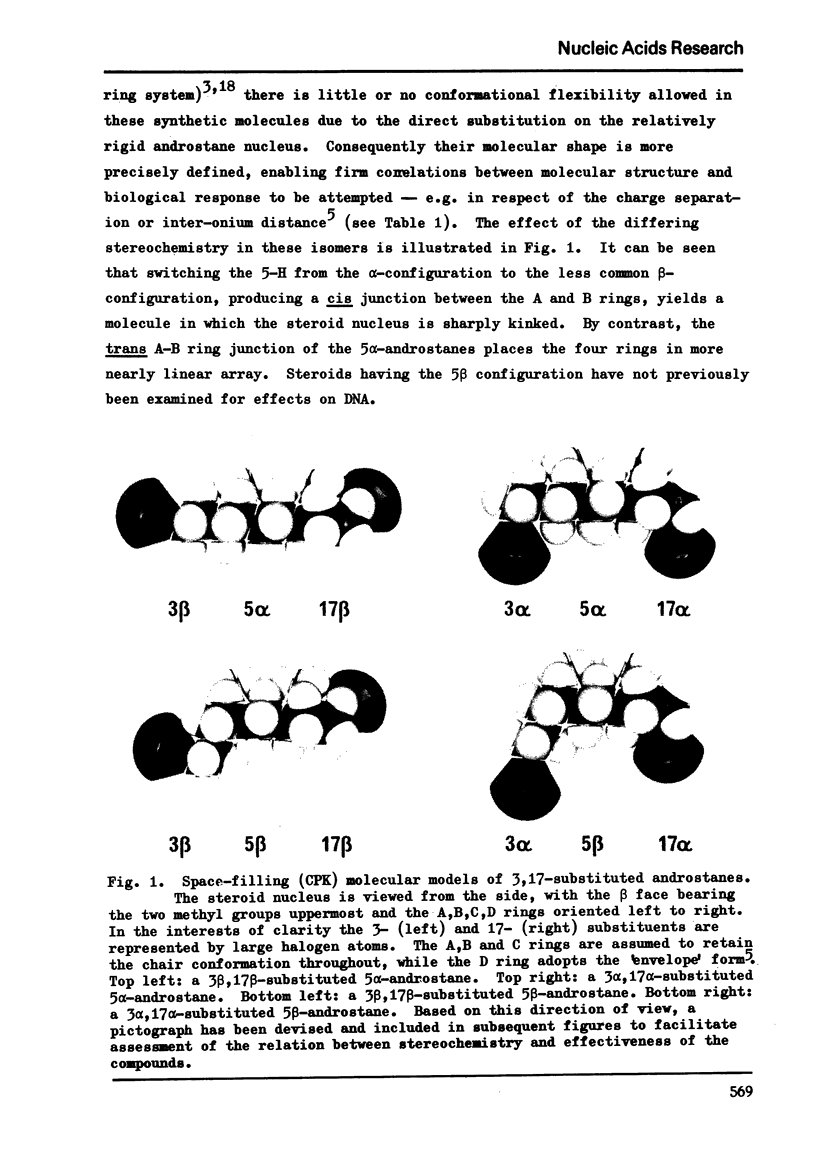
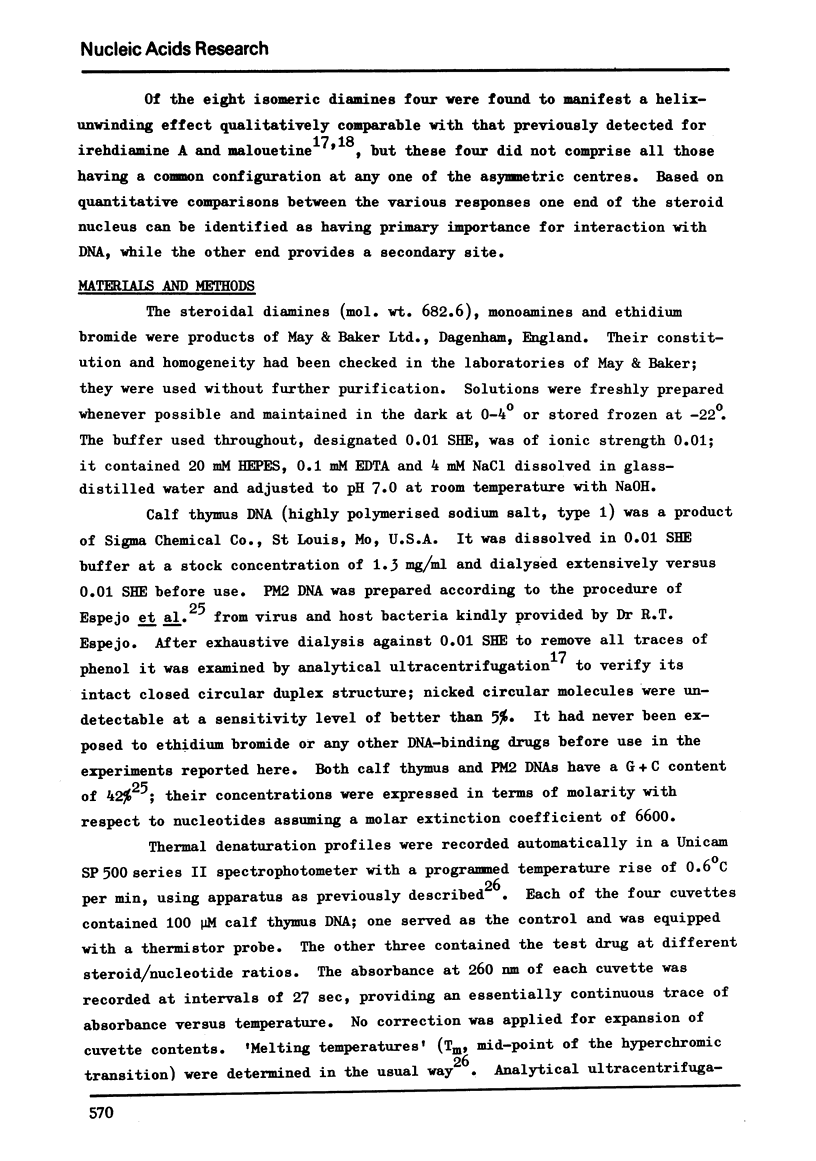
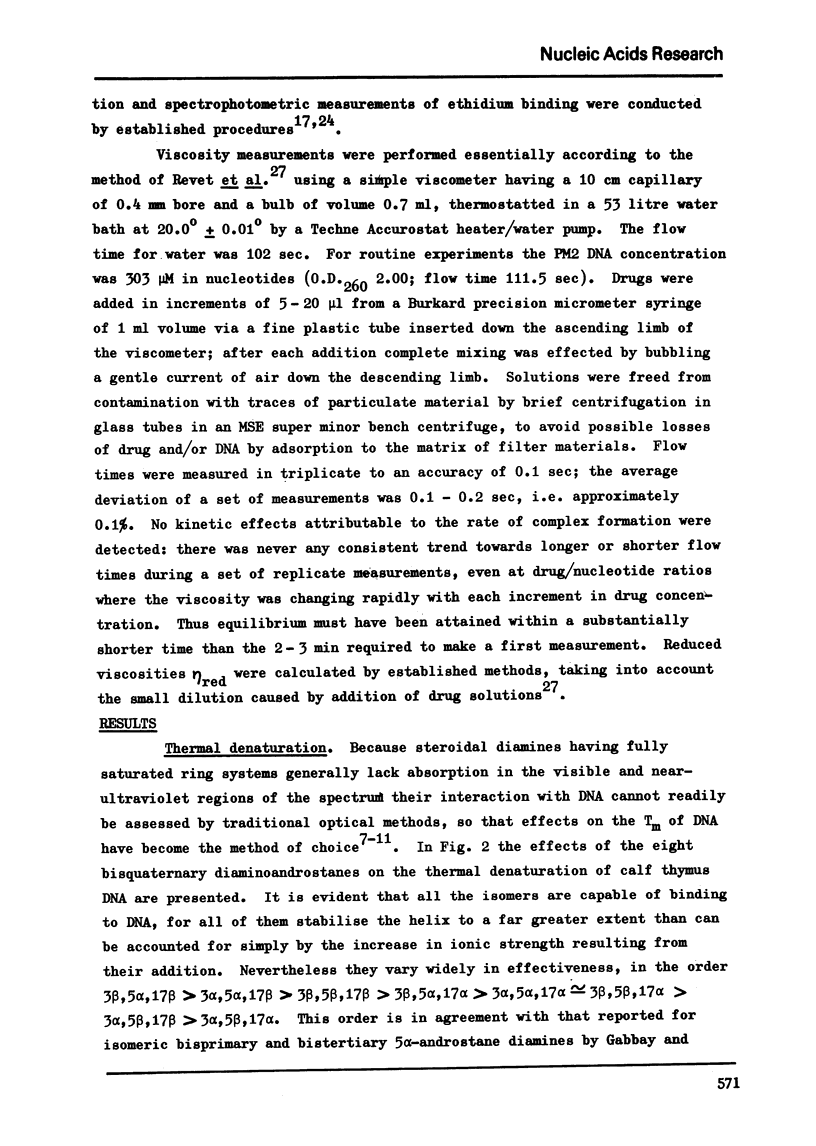
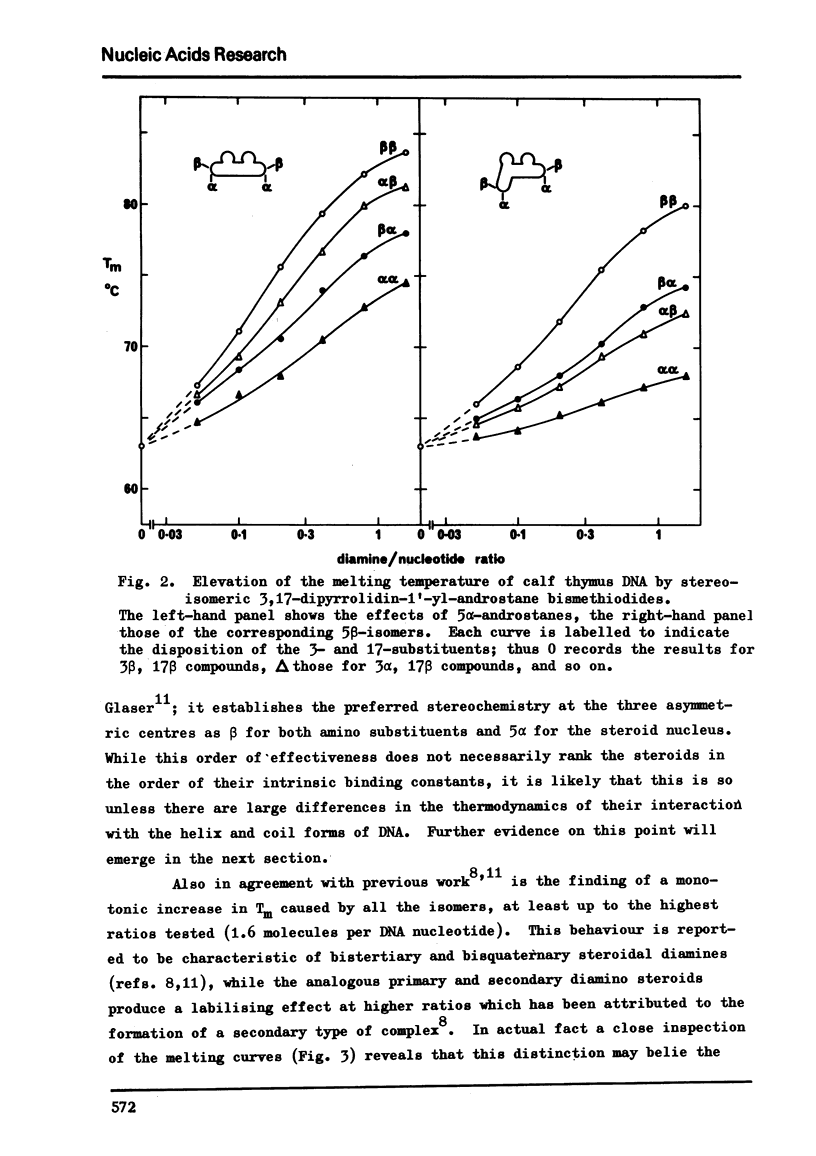
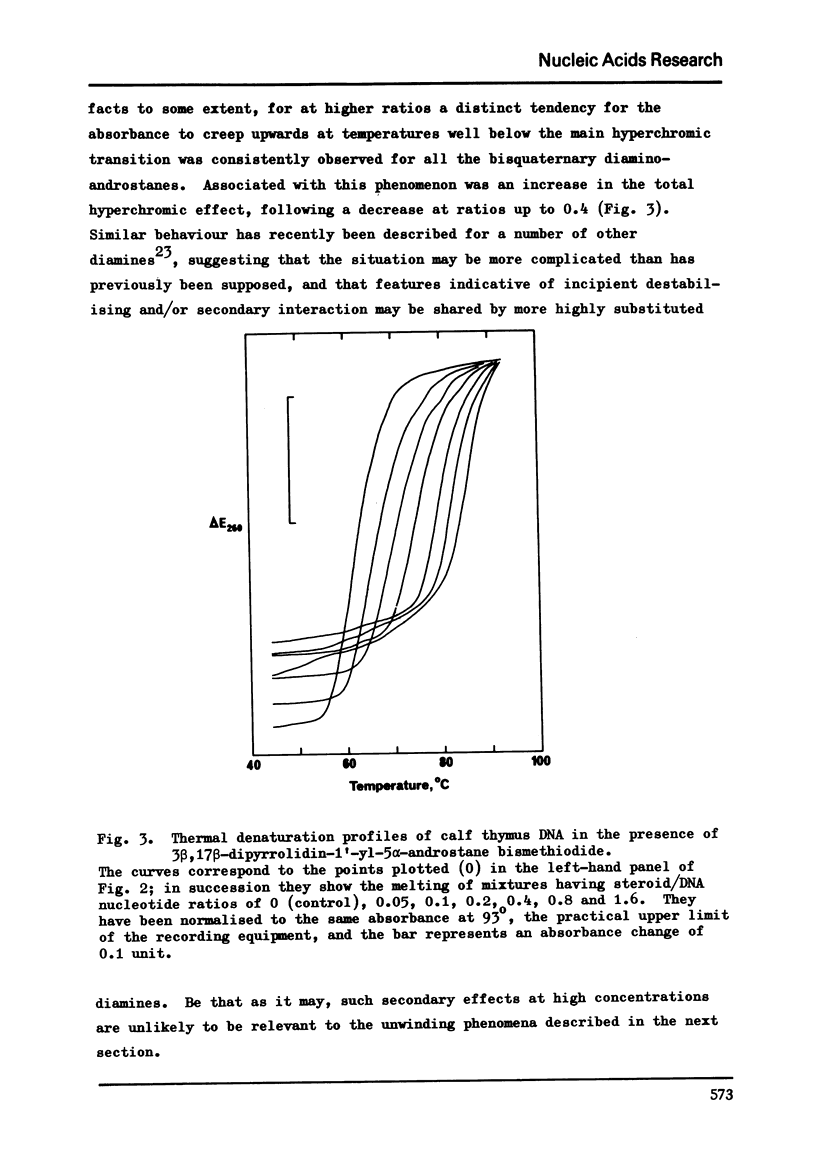
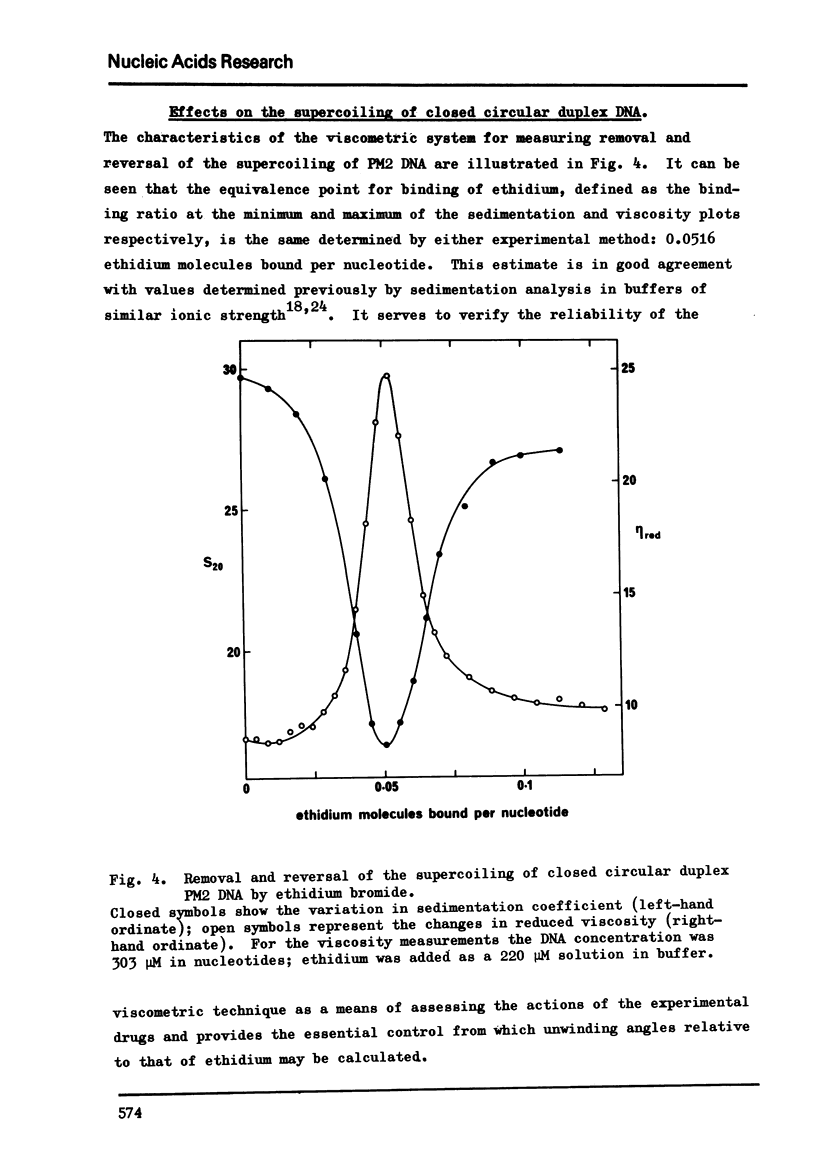
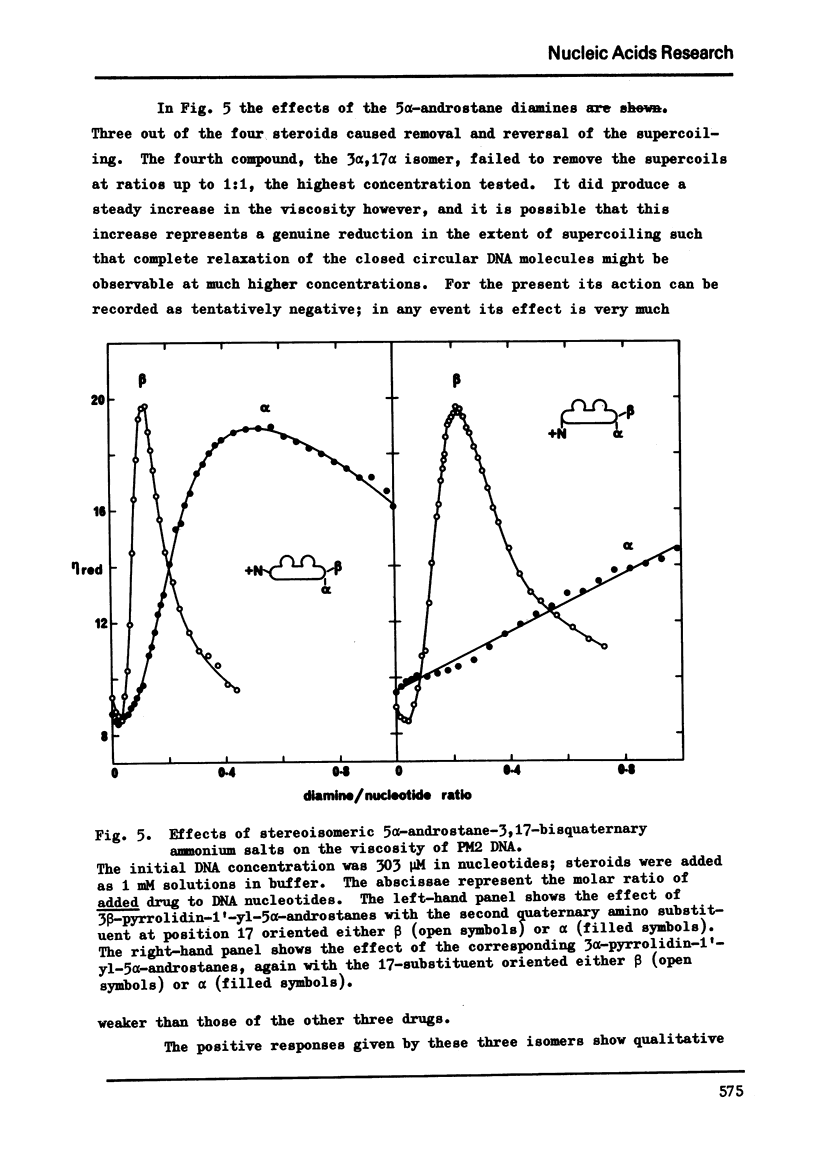
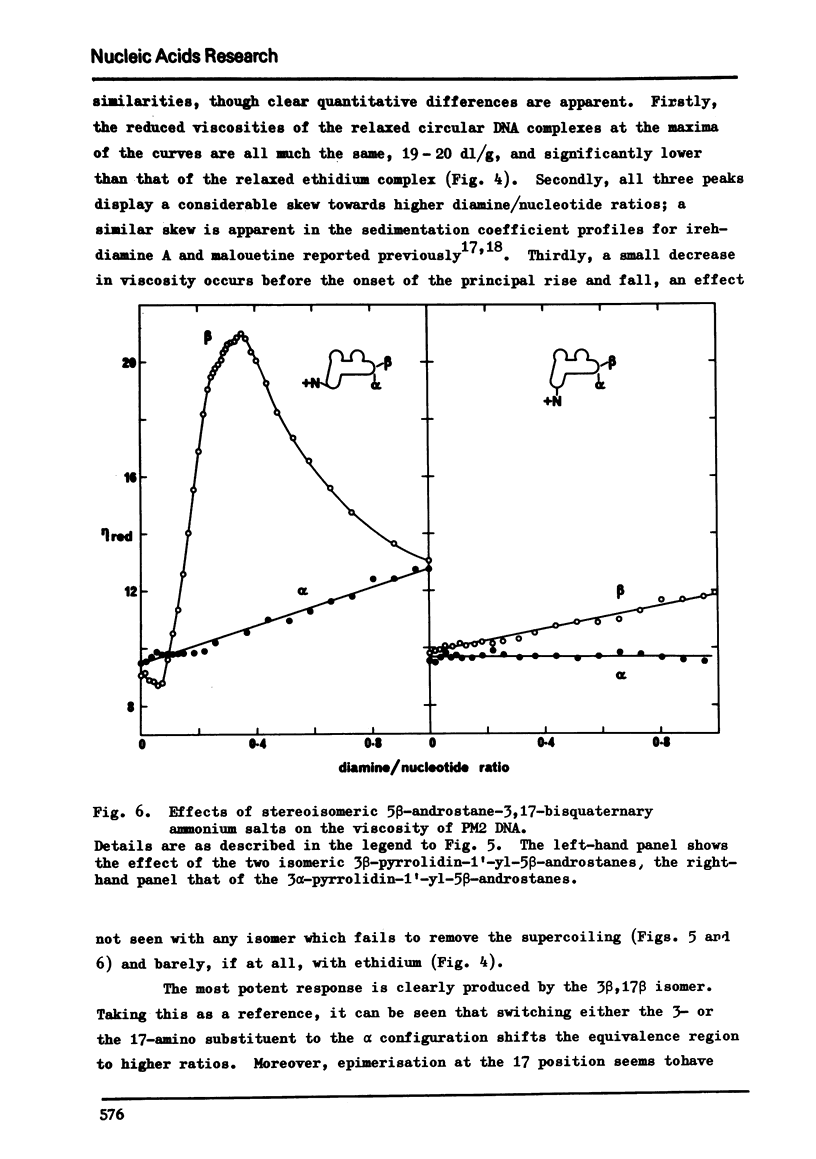
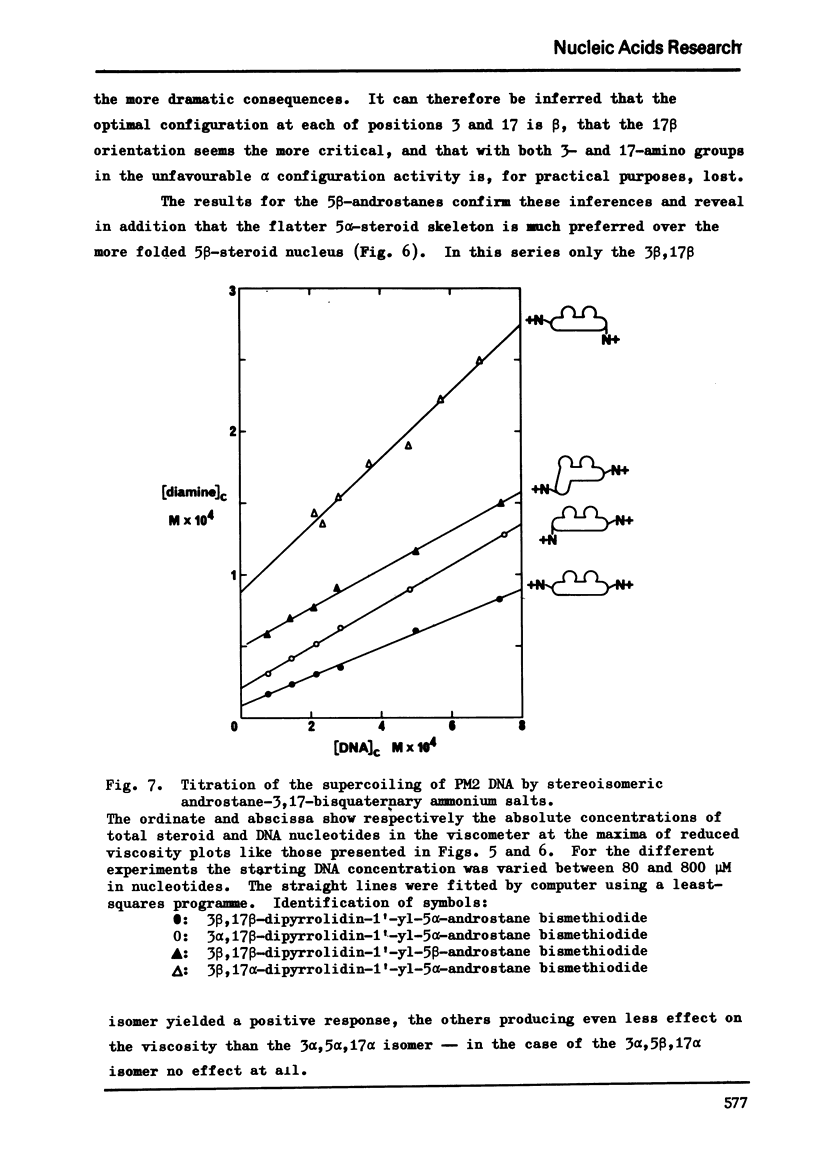
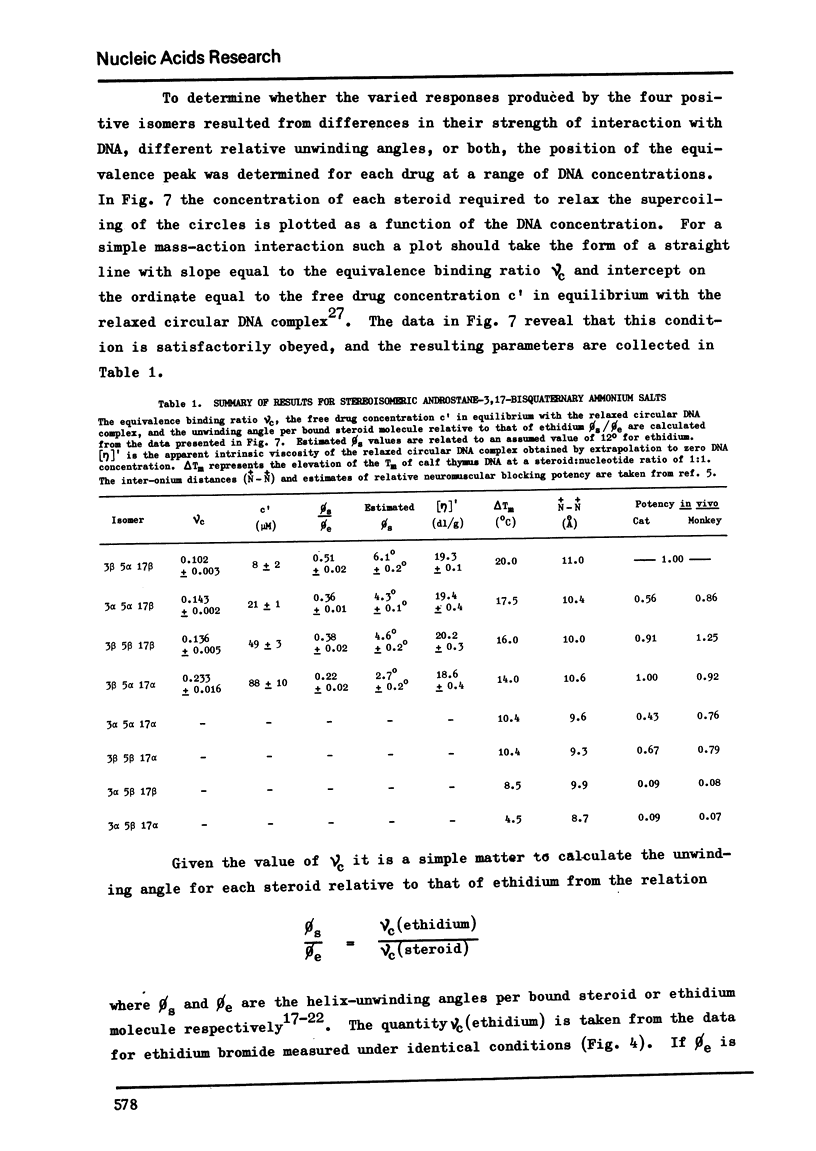
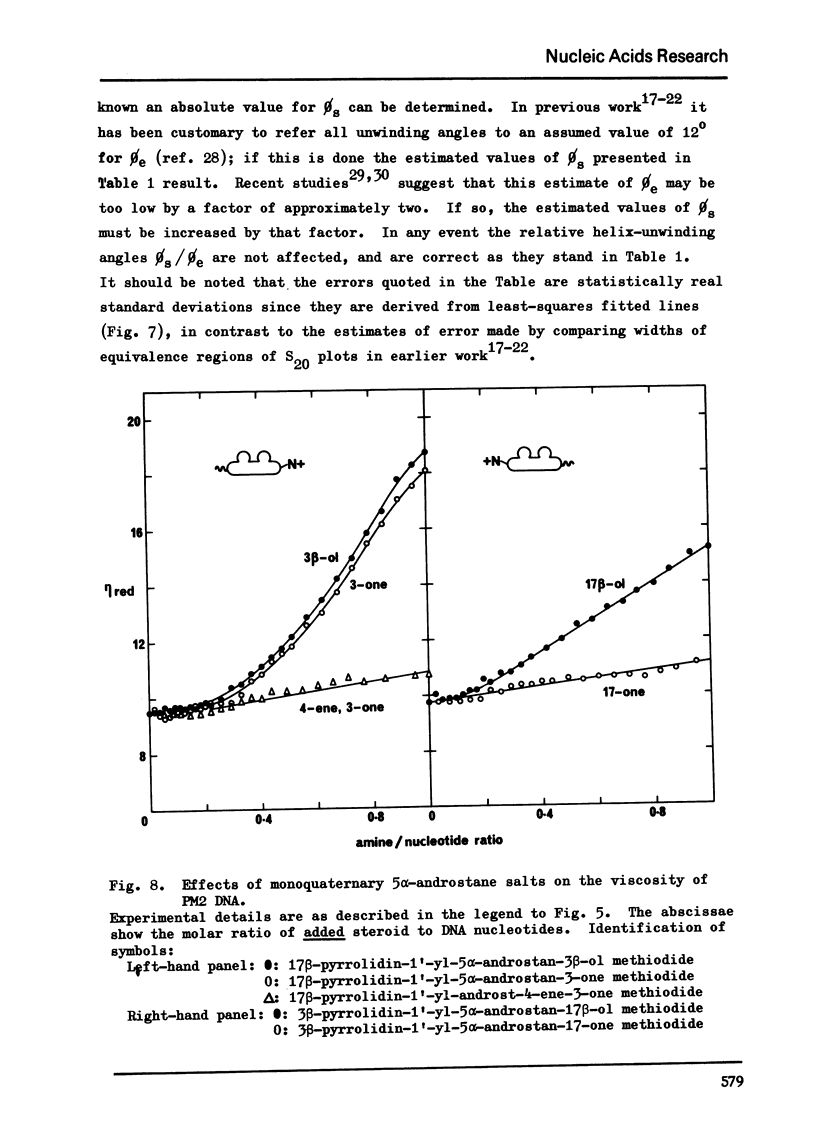
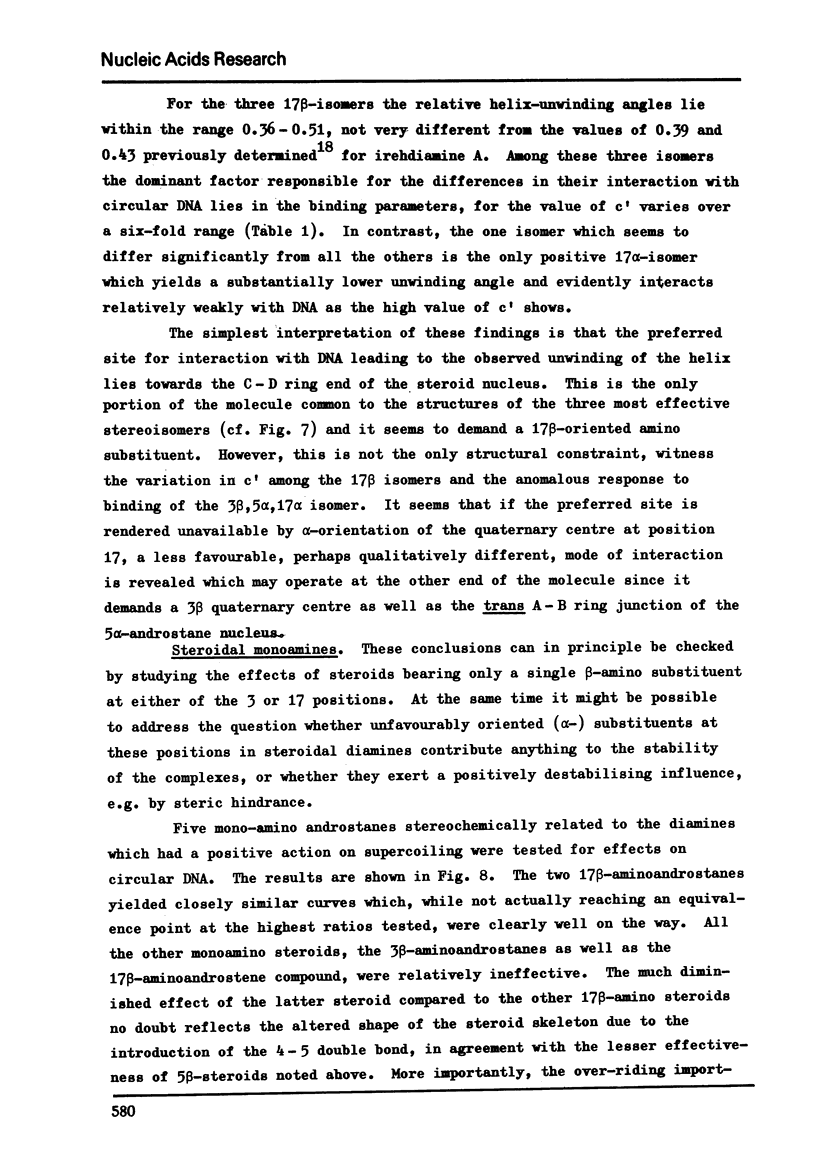
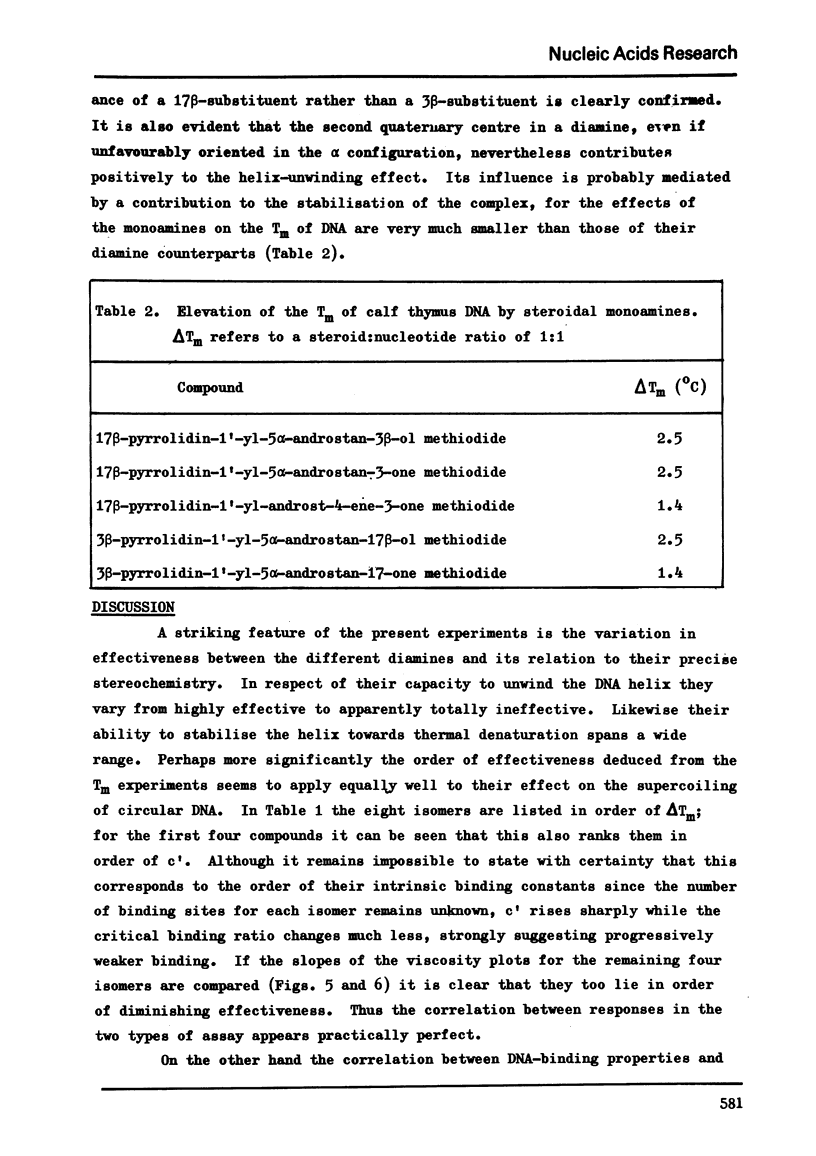
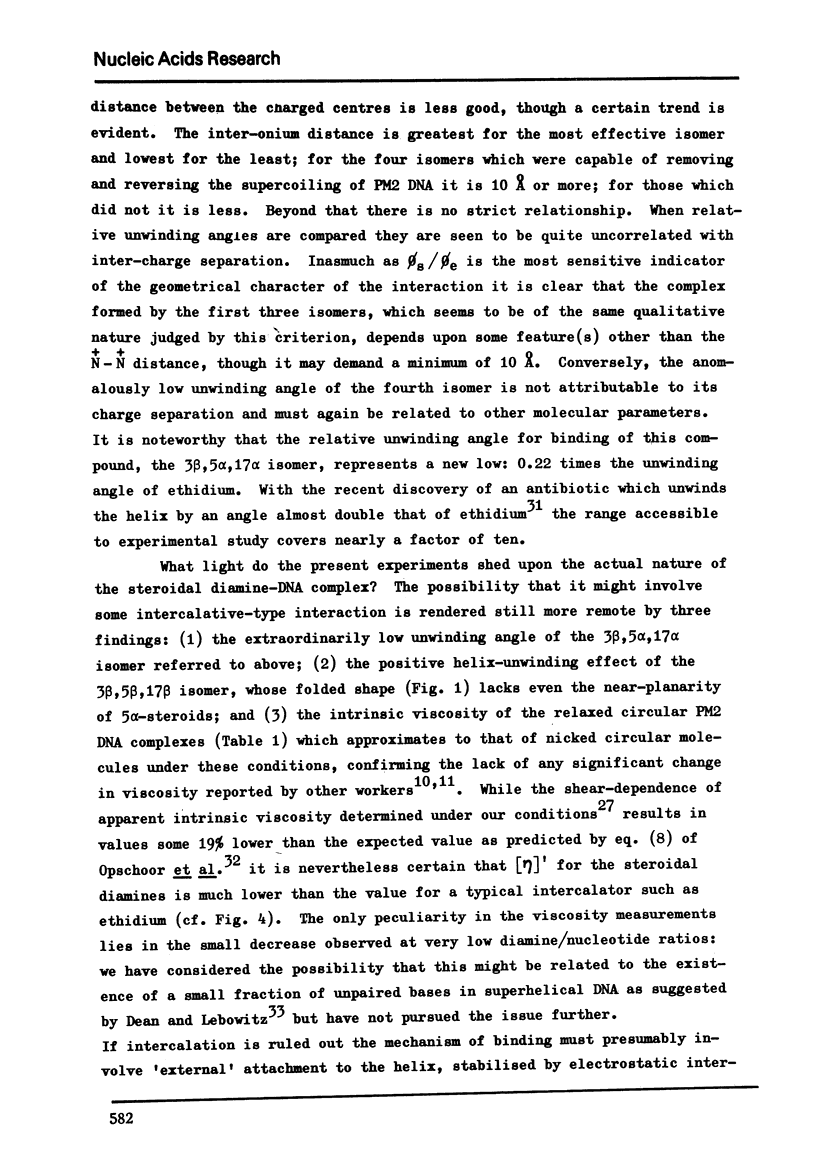
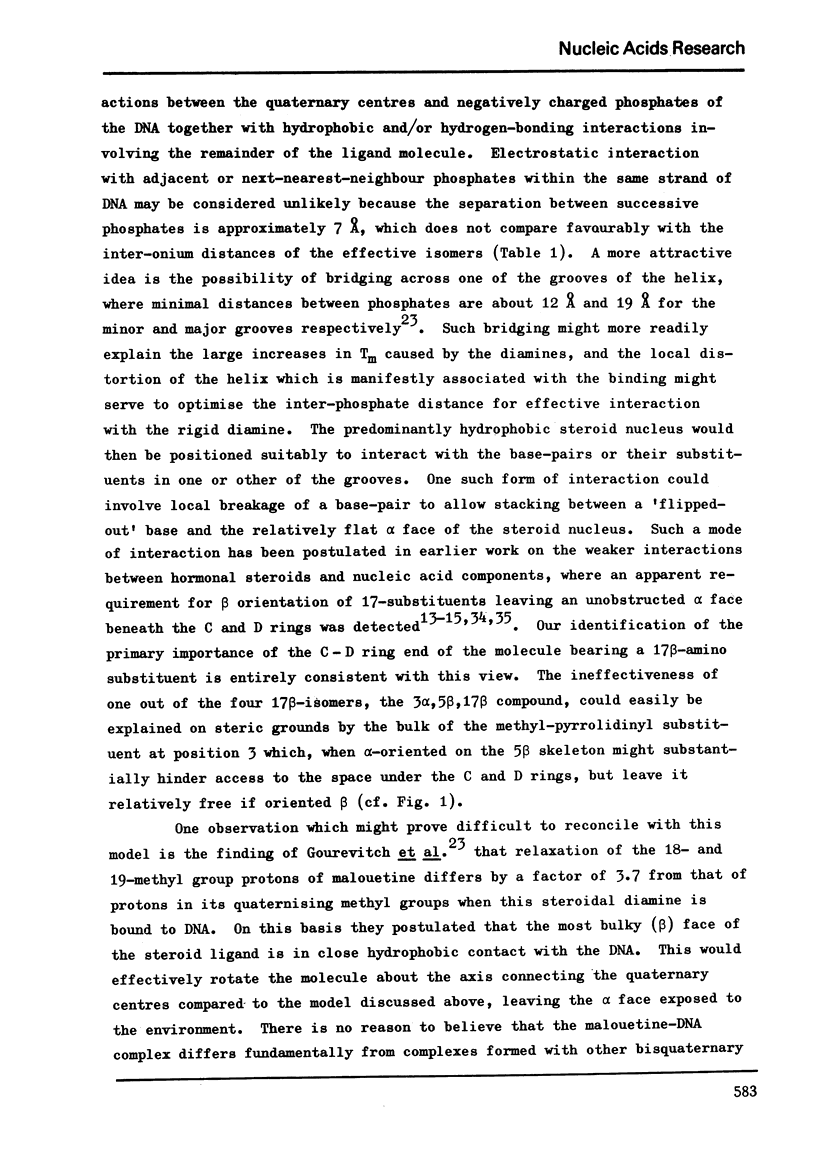
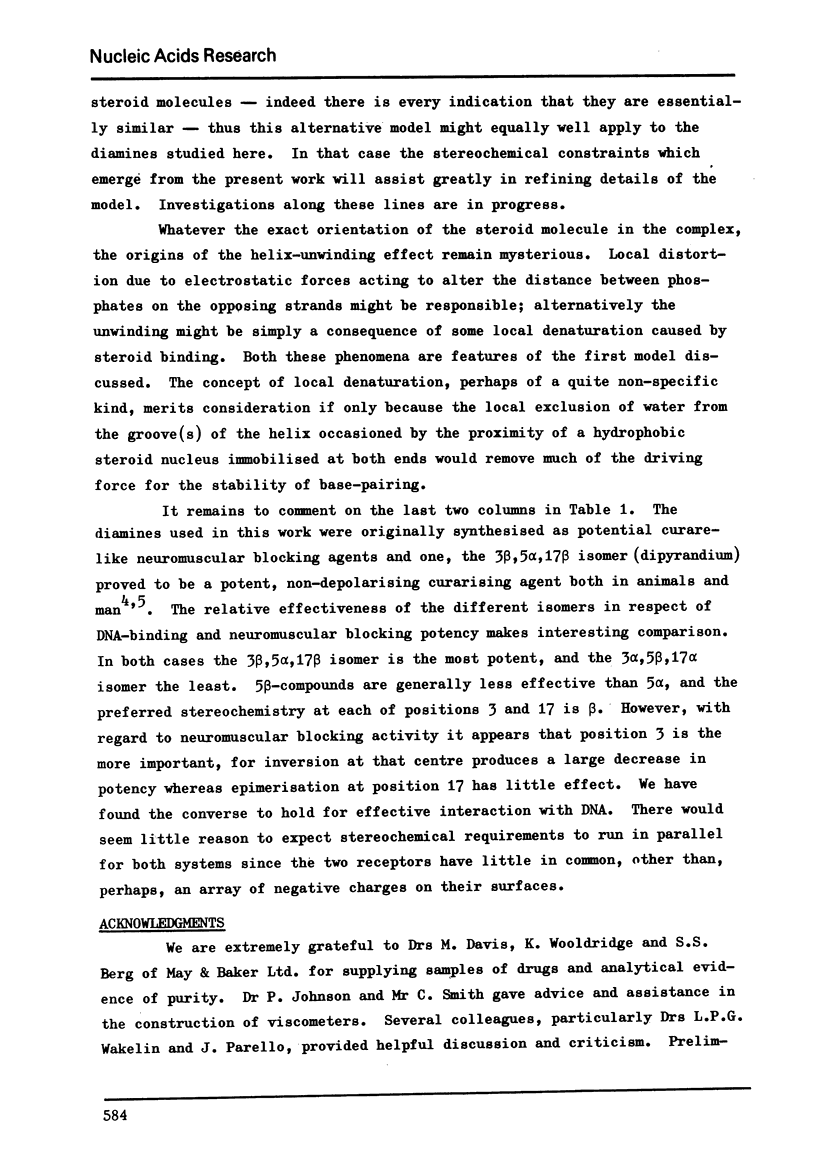
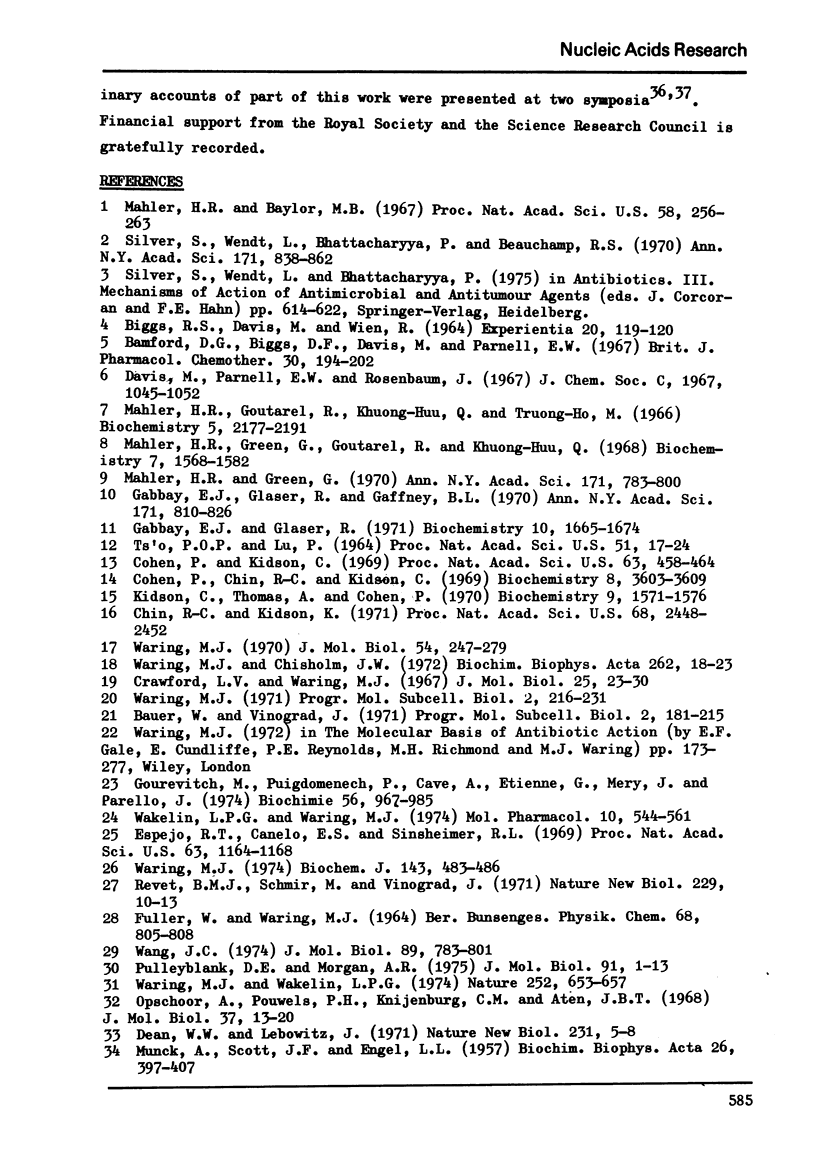
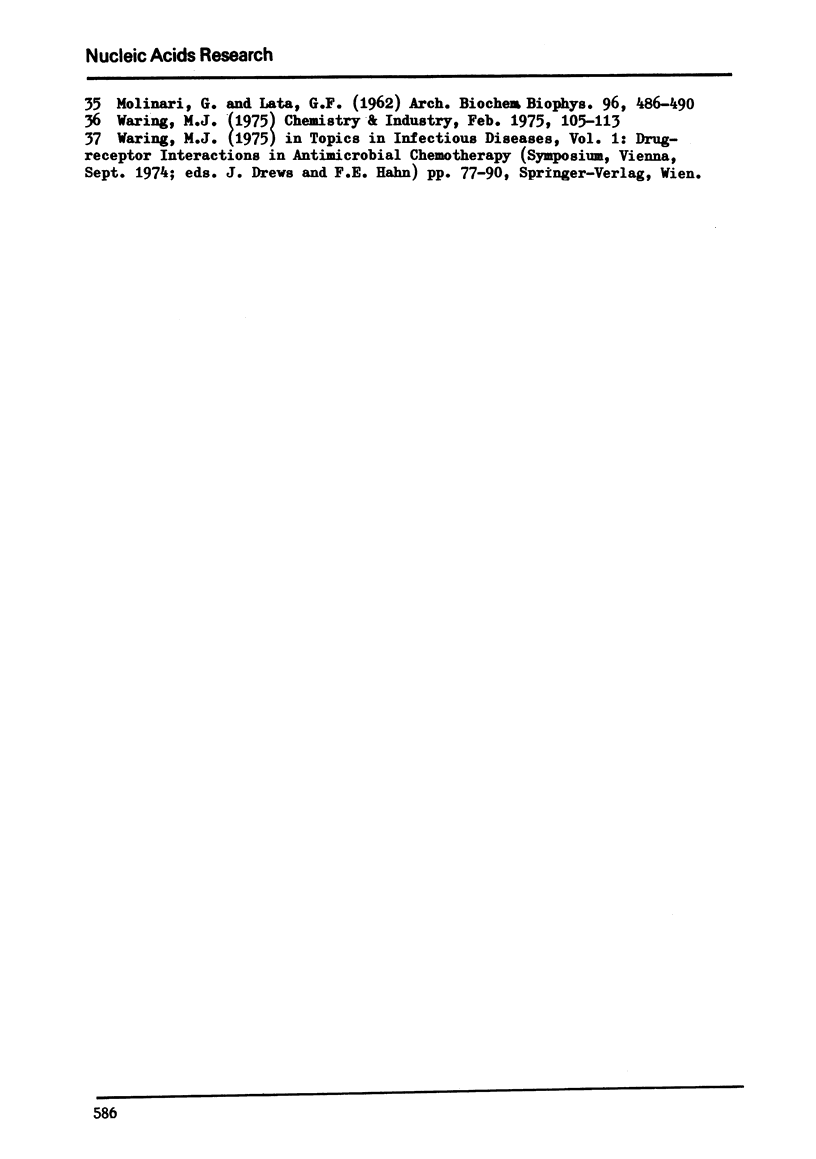
Images in this article
Selected References
These references are in PubMed. This may not be the complete list of references from this article.
- Bamford D. G., Biggs D. F., Davis M., Parnell E. W. Neuromuscular blocking properties of stereoisomeric androstane-3,l7-bisquaternary ammonium salts. Br J Pharmacol Chemother. 1967 May;30(1):194–202. doi: 10.1111/j.1476-5381.1967.tb02125.x. [DOI] [PMC free article] [PubMed] [Google Scholar]
- Biggs R. S., Davis M., Wien R. Muscle-relaxant properties of a steroid bis-quaternary ammonium salt. Experientia. 1964 Mar 15;20(3):119–120. doi: 10.1007/BF02150684. [DOI] [PubMed] [Google Scholar]
- Chin R. C., Kidson C. Selective associations of hormonal steroids with aminoacyl transfer RNAs and control of protein synthesis. Proc Natl Acad Sci U S A. 1971 Oct;68(10):2448–2452. doi: 10.1073/pnas.68.10.2448. [DOI] [PMC free article] [PubMed] [Google Scholar]
- Cohen P., Chin R. C., Kidson C. Interactions of hormonal steroids with nucleic acids. II. Structural and thermodynamic aspects of binding. Biochemistry. 1969 Sep;8(9):3603–3609. doi: 10.1021/bi00837a017. [DOI] [PubMed] [Google Scholar]
- Cohen P., Kidson C. Interactions of hormonal steroids with nucelic acids. I. A specific requirement for guanine. Proc Natl Acad Sci U S A. 1969 Jun;63(2):458–464. doi: 10.1073/pnas.63.2.458. [DOI] [PMC free article] [PubMed] [Google Scholar]
- Crawford L. V., Waring M. J. Supercoiling of polyoma virus DNA measured by its interaction with ethidium bromide. J Mol Biol. 1967 Apr 14;25(1):23–30. doi: 10.1016/0022-2836(67)90276-8. [DOI] [PubMed] [Google Scholar]
- Davis M., Parnell E. W., Rosenbaum J. Steroid amines. IV. 3,17-Diaminoandrostane derivatives. J Chem Soc Perkin 1. 1967;11:1045–1052. doi: 10.1039/j39670001045. [DOI] [PubMed] [Google Scholar]
- Dean W. W., Lebowitz J. Partial alteration of secondary structure in native superhelical DNA. Nat New Biol. 1971 May 5;231(18):5–8. [PubMed] [Google Scholar]
- Espejo R. T., Canelo E. S., Sinsheimer R. L. DNA of bacteriophage PM2: a closed circular double-stranded molecule. Proc Natl Acad Sci U S A. 1969 Aug;63(4):1164–1168. doi: 10.1073/pnas.63.4.1164. [DOI] [PMC free article] [PubMed] [Google Scholar]
- Gabbay E. J., Glaser R. Topography of nucleic acid helices in solutions. Proton magnetic resonance studies of the interaction specificities of steroidal amines with nucleic acid systems. Biochemistry. 1971 Apr 27;10(9):1665–1674. doi: 10.1021/bi00785a026. [DOI] [PubMed] [Google Scholar]
- Gourévitch M., Puigdoménech P., Cavé A., Etienne G., Méry J., Parello J. Model studies in relation to the molecular structure of chromatin. Biochimie. 1974;56(6-7):967–985. doi: 10.1016/s0300-9084(74)80518-3. [DOI] [PubMed] [Google Scholar]
- Kidson C., Thomas A., Cohen P. Interactions of hormonal steroids with nucleic acids. 3. Role of polymer structure. Biochemistry. 1970 Mar 31;9(7):1571–1576. doi: 10.1021/bi00809a015. [DOI] [PubMed] [Google Scholar]
- MOLINARI G., LATA G. F. Interaction of steroids with some pyrimidine and purine derivatives. Arch Biochem Biophys. 1962 Mar;96:486–490. doi: 10.1016/0003-9861(62)90325-9. [DOI] [PubMed] [Google Scholar]
- MUNCK A., SCOTT J. F., ENGEL L. L. The interaction of steroid hormones and coenzyme components. Biochim Biophys Acta. 1957 Nov;26(2):397–407. doi: 10.1016/0006-3002(57)90022-7. [DOI] [PubMed] [Google Scholar]
- Mahler H. R., Baylor M. B. Effects of steroidal diamines on DNA duplication and mutagenesis. Proc Natl Acad Sci U S A. 1967 Jul;58(1):256–263. doi: 10.1073/pnas.58.1.256. [DOI] [PMC free article] [PubMed] [Google Scholar]
- Mahler H. R., Goutarel R., Khuong-Huu Q., Truong HO M. Nucleic acid interactions. VI. Effects of steroidal diamines. Biochemistry. 1966 Jul;5(7):2177–2191. doi: 10.1021/bi00871a005. [DOI] [PubMed] [Google Scholar]
- Mahler H. R., Green G., Goutarel R., Khuong-Huu Q. Nucleic acid-small molecule interactions. VII. Further characterization of deoxyribonucleic acid-diamino steroid complexes. Biochemistry. 1968 Apr;7(4):1568–1582. doi: 10.1021/bi00844a046. [DOI] [PubMed] [Google Scholar]
- Opschoor A., Pouwels P. H., Knijnenburg C. M., Aten J. B. Viscosity and sedimentation of circular native deoxyribonucleic acid. J Mol Biol. 1968 Oct 14;37(1):13–20. doi: 10.1016/0022-2836(68)90070-3. [DOI] [PubMed] [Google Scholar]
- Pulleyblank D. E., Morgan A. R. The sense of naturally occurring superhelices and the unwinding angle of intercalated ethidium. J Mol Biol. 1975 Jan 5;91(1):1–13. doi: 10.1016/0022-2836(75)90368-x. [DOI] [PubMed] [Google Scholar]
- Révet B. M., Schmir M., Vinograd J. Direct determination of the superhelix density of closed circular DNA by viscometric titration. Nat New Biol. 1971 Jan 6;229(1):10–13. doi: 10.1038/newbio229010a0. [DOI] [PubMed] [Google Scholar]
- TSO P. O., LU P. INTERACTION OF NUCLEIC ACIDS, I. PHYSICAL BINDING OF THYMINE, ADENINE, STEROIDS, AND AROMATIC HYDROCARBONS TO NUCLEIC ACIDS. Proc Natl Acad Sci U S A. 1964 Jan;51:17–24. doi: 10.1073/pnas.51.1.17. [DOI] [PMC free article] [PubMed] [Google Scholar]
- Wakelin L. P., Waring M. J. The unwinding of circular deoxyribonucleic acid by phenanthridinium drugs: structure-activity relations for the intercalation reaction. Mol Pharmacol. 1974 May;10(3):544–561. [PubMed] [Google Scholar]
- Wang J. C. The degree of unwinding of the DNA helix by ethidium. I. Titration of twisted PM2 DNA molecules in alkaline cesium chloride density gradients. J Mol Biol. 1974 Nov 15;89(4):783–801. doi: 10.1016/0022-2836(74)90053-9. [DOI] [PubMed] [Google Scholar]
- Waring M. J., Chisholm J. W. Uncoiling of bacteriophage PM2 DNA by binding of steroidal diamines. Biochim Biophys Acta. 1972 Feb 23;262(1):18–23. doi: 10.1016/0005-2787(72)90214-6. [DOI] [PubMed] [Google Scholar]
- Waring M. J. Stablilzation of two-standard ribohomopolymer helices and destabilzation of a three-stranded helix by ethidium bromide. Biochem J. 1974 Nov;143(2):483–486. doi: 10.1042/bj1430483. [DOI] [PMC free article] [PubMed] [Google Scholar]
- Waring M. J., Wakelin L. P. Echinomycin: a bifunctional intercalating antibiotic. Nature. 1974 Dec 20;252(5485):653–657. doi: 10.1038/252653a0. [DOI] [PubMed] [Google Scholar]
- Waring M. Variation of the supercoils in closed circular DNA by binding of antibiotics and drugs: evidence for molecular models involving intercalation. J Mol Biol. 1970 Dec 14;54(2):247–279. doi: 10.1016/0022-2836(70)90429-8. [DOI] [PubMed] [Google Scholar]



